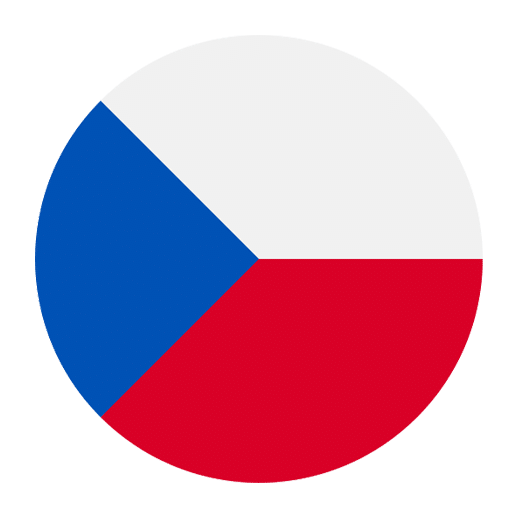Learning a new language can often be a labyrinth of words, meanings, and nuances. This is particularly true for Czech, a language rich in vocabulary and sometimes subtle differences in word usage. Two such words that can easily confuse learners are “záda” and “záď.” While they may look and sound similar, they have very different meanings. Understanding these differences is crucial for anyone aiming to achieve fluency in Czech. Let’s delve into the details to clarify the distinctions between these two intriguing words.
Understanding Záda
In Czech, the word “záda” refers to the back of a human body. It’s a plural noun, even though it refers to a singular part of the body, much like the English word “scissors.” The back is an essential part of human anatomy, and knowing how to refer to it correctly in Czech is fundamental. Here are some common phrases and sentences that use the word “záda”:
1. **Mám bolesti v zádech.** – I have back pain.
2. **Narovnej si záda.** – Straighten your back.
3. **Masáž zad je velmi relaxační.** – A back massage is very relaxing.
Grammar and Usage
The word “záda” is always used in the plural form, even when it refers to a single back. This is a unique feature that can be confusing for English speakers. Here are the declensions for “záda”:
– **Nominative (who, what)**: záda
– **Genitive (of whom, of what)**: zad
– **Dative (to whom, to what)**: zádům
– **Accusative (whom, what)**: záda
– **Vocative (addressing)**: záda
– **Locative (about whom, about what)**: zádech
– **Instrumental (with whom, with what)**: zády
Understanding these declensions is crucial for using “záda” correctly in sentences. For example:
– **Mluvím o tvých zádech.** – I am talking about your back.
– **Jdu na masáž zad.** – I am going for a back massage.
– **Mám problémy se zády.** – I have problems with my back.
Understanding Záď
On the other hand, “záď” refers to the stern or rear part of a ship or vehicle. It is a singular noun and is used in a completely different context than “záda.” Knowing this word is particularly useful for those interested in nautical terms or who work in industries related to shipping and transportation. Here are some examples of how “záď” is used:
1. **Záď lodi je poškozená.** – The stern of the ship is damaged.
2. **Stál na zádi a díval se na vlny.** – He stood at the stern and watched the waves.
3. **Naložili zboží na záď nákladního vozu.** – They loaded the goods onto the rear of the truck.
Grammar and Usage
Unlike “záda,” the word “záď” is singular and follows a different declension pattern. Here are the declensions for “záď”:
– **Nominative (who, what)**: záď
– **Genitive (of whom, of what)**: zádě
– **Dative (to whom, to what)**: zádi
– **Accusative (whom, what)**: záď
– **Vocative (addressing)**: zádě
– **Locative (about whom, about what)**: zádi
– **Instrumental (with whom, with what)**: zádí
Using “záď” correctly in sentences involves understanding these declensions. For example:
– **Hovořím o zádi lodi.** – I am talking about the stern of the ship.
– **Poškození na zádi bylo vážné.** – The damage to the stern was serious.
– **Stál jsem na zádi a pozoroval moře.** – I stood at the stern and watched the sea.
Comparing Záda and Záď
While “záda” and “záď” might look similar, their usage and meanings are entirely different. Here’s a quick comparison to help you remember:
1. **Meaning**:
– **Záda**: Refers to the back of a human body.
– **Záď**: Refers to the stern or rear part of a ship or vehicle.
2. **Form**:
– **Záda**: Always used in the plural form.
– **Záď**: Singular noun.
3. **Context**:
– **Záda**: Used in medical, anatomical, or general contexts related to the human body.
– **Záď**: Used in nautical or transportation contexts.
4. **Declensions**:
– **Záda**: Has its unique plural declensions.
– **Záď**: Follows singular declensions.
Understanding these differences can significantly improve your fluency in Czech, as using these words correctly will help you communicate more effectively.
Practical Tips for Remembering the Differences
Learning vocabulary in a new language can be challenging, especially when words are similar in spelling and pronunciation. Here are some practical tips to help you remember the differences between “záda” and “záď”:
1. **Contextual Learning**:
– Use each word in context to solidify its meaning in your mind. Write sentences or short paragraphs using “záda” and “záď” in their respective contexts.
2. **Visual Aids**:
– Create flashcards with pictures representing “záda” and “záď.” Visualizing the human back for “záda” and the stern of a ship for “záď” can help reinforce their meanings.
3. **Mnemonics**:
– Develop mnemonic devices to remember the difference. For example, “Záda” can be remembered with “A for Anatomy” (human back), and “Záď” with “D for Deck” (stern of a ship).
4. **Practice with Native Speakers**:
– Engage in conversations with native Czech speakers. Practice using both words in sentences and ask for feedback to ensure you’re using them correctly.
5. **Regular Revision**:
– Regularly review the declensions and meanings of both words. Frequent exposure and repetition can help solidify your understanding.
Common Mistakes and How to Avoid Them
Even with a good grasp of vocabulary, it’s easy to make mistakes, especially with words that look and sound similar. Here are some common mistakes learners make with “záda” and “záď,” along with tips on how to avoid them:
1. **Using the Wrong Word in Context**:
– Mistake: Saying “záď” when referring to back pain.
– Correction: Remember that “záda” is related to the human body. Use “záda” for back pain or any anatomical reference.
2. **Incorrect Declension Usage**:
– Mistake: Using the singular declension for “záda.”
– Correction: Always remember that “záda” is plural and use the appropriate plural declensions.
3. **Pronunciation Errors**:
– Mistake: Pronouncing “záda” and “záď” the same way.
– Correction: Pay attention to the pronunciation differences. Practice with audio resources or native speakers to get it right.
Exercises to Practice
To ensure you’ve mastered the differences between “záda” and “záď,” here are some exercises to practice:
1. **Fill-in-the-Blank Sentences**:
– Choose the correct word to complete the sentence.
– **Narovnej si ______.** (záda/záď)
– **Stál na ______ a díval se na moře.** (záda/záď)
– **Mám bolesti v ______.** (záda/záď)
2. **Translation Practice**:
– Translate the following sentences into Czech.
– I have back pain.
– The stern of the ship is damaged.
– I stood at the stern and watched the waves.
– Straighten your back.
3. **Declension Drill**:
– Conjugate “záda” and “záď” in all their declensions and use them in sentences.
By consistently practicing and reviewing these words, you’ll be well on your way to mastering their usage and avoiding common pitfalls.
Conclusion
Understanding the nuances of a language is a significant step toward fluency. In Czech, the words “záda” and “záď” offer an excellent example of how similar-looking words can have entirely different meanings and uses. By paying attention to context, practicing regularly, and using mnemonic devices, you can easily remember the differences between these two words.
Remember, language learning is a journey. Every new word and phrase you master brings you closer to fluency and a deeper understanding of the culture. So keep practicing, stay curious, and enjoy the process of learning Czech. Happy studying!

